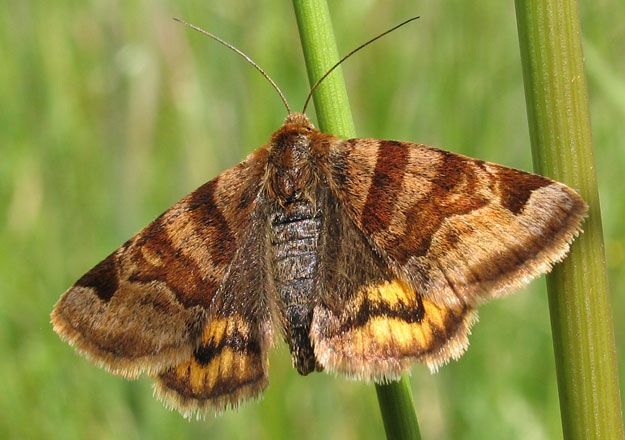- info@sirhowyhillwoodlands.co.uk
- Thomas Ellis Way, Tredegar NP22 4QF
- About Us
- Get involved
- Visit Us
Visit Tredegar & our Woodlands
Come and visit us!
Sirhowy Hill Woodland
Thomas Ellis Way
Tredegar
Blaenau Gwent
NP22 4QF - Wildlife
- Woodland Shop
Latest and greatest products, direct from our
Woodland Shop
Sourced from the Woodlands and the local community.
You have
item(s) in your bag
- Home
- /
- Blog
- /
- Animals & Wildlife
- /
- Moths
- /
- Burnet Companion

Scientific name: Euclidia glyphica
Burnet Companion
May to July. Britain and Ireland. Medium-sized, brown with orange-yellow hindwings. Lives on downland, flower-rich hay-meadows, embankments, woodland rides
The largely orange-yellow hindwings, combined with the warm brown forewings are characteristic of this species which can be confused with no other. Often seen in the company of the Mother Shipton and some burnet moths, this species flies in sunshine and warm overcast weather. Very alert and readily disturbed from low vegetation, generally flying only short distances.
The larvae can be seen from late June to late August before overwintering as pupae in a cocoon among plant debris.
What does the Burnet Companion eat?
The Burnet Companion eats white Clover (Trifolium repens), Red Clover (Trifolium pratense), Black Medick (Medicago lupulina), Lucerne (Medicago sativa), Common Bird’s-foot Trefoil (Lotus corniculatus) and probably other trefoils and vetches.
What habitat does the Burnet Companion live in?
The Burnet companion lives in a range of habitats including dry or damp grasslands, usually on calcareous soils, including downland, flower-rich hay meadows, woodland rides, verges and embankments.
What family does the Burnet Companion belong to?
The Burnet Companion belong to the Catoalines family.

Click to view more
Statistics
Scientific Name
Euclidia glyphica
Location
England, Wales, Scotland and Ireland
Size
Medium Sized
Wingspan Length: 26-30mm
Population
Fairly well distributed in the southern half of England and south-east Wales

Other Wildlife







